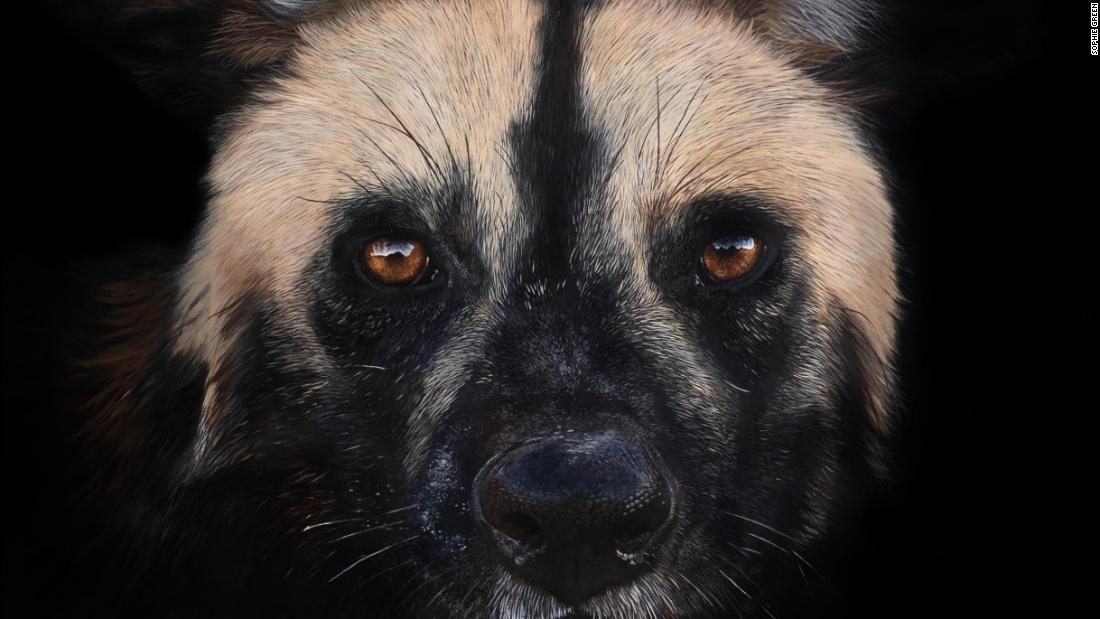[ad_1]
A whale shark under the waves caught in a beam of sunlight, a snow leopard striding forward with its eyes locked on yours — these images could easily be mistaken for photographs, but in fact they were captured by the stroke of a paintbrush.
British artist Sophie Green creates hyperrealistic paintings of vulnerable animal species to raise awareness and inspire protection. With a following of more than 115,000 on Instagram, she’s not doing so badly.
In November, one of Green’s works was auctioned at the Royal Geographical Society in London. It was a painting of a chimp, called Wounda, that had been rescued from the illegal bushmeat trade by the Jane Goodall Institute in the Republic of the Congo. Wounda means “close to death.”

“Wounda the Chimpanzee,” by Sophie Green. Credit: Sophie Green
Art with a message
Green believes that painting can be more effective than wildlife photography, because it affords more control over the composition. “If you want the animal to be looking directly into your eyes, then you can do that,” she said.

“Snow Leopard.” Credit: Sophie Green
“I try to have the personality of the animal shine through so that it feels like somebody is actually looking at the animal rather than looking at a photograph of the animal,” she added.
Inspiration everywhere
Green’s process differs from piece to piece. She finds images for inspiration everywhere, sometimes using photographs captured by herself or her friends, sometimes scouring the Internet to find images of the creature she wants to paint. Often, the final piece comes from a composite of several images.
Although many hyperrealism artists prefer oil, acrylic paint is Green’s favorite medium for its fast-drying capabilities. She likes to layer it on quickly to add depth to the image. Her paintings normally take around six weeks to complete, and she paints “every single day, seven days a week.”

“African Wild Dog.” Credit: Sophie Green
Her goal is to inspire action from people who view the artwork. “If you feel like you’ve actually made a connection with an animal and you’ve looked into the animal’s eyes, I think it’s much harder to forget that there is so much going on in the world right now and so many animals that need our help,” Green said.

“Whale Shark.” Credit: Sophie Green
Although the title could be seen as alluding to the fragility of the endangered species highlighted in the works, Green says that the meaning is more ambiguous. “Potentially there could be an impermanence of our problems, too,” she said, “so there’s more of a hopeful side to the collection as well.”
[ad_2]
